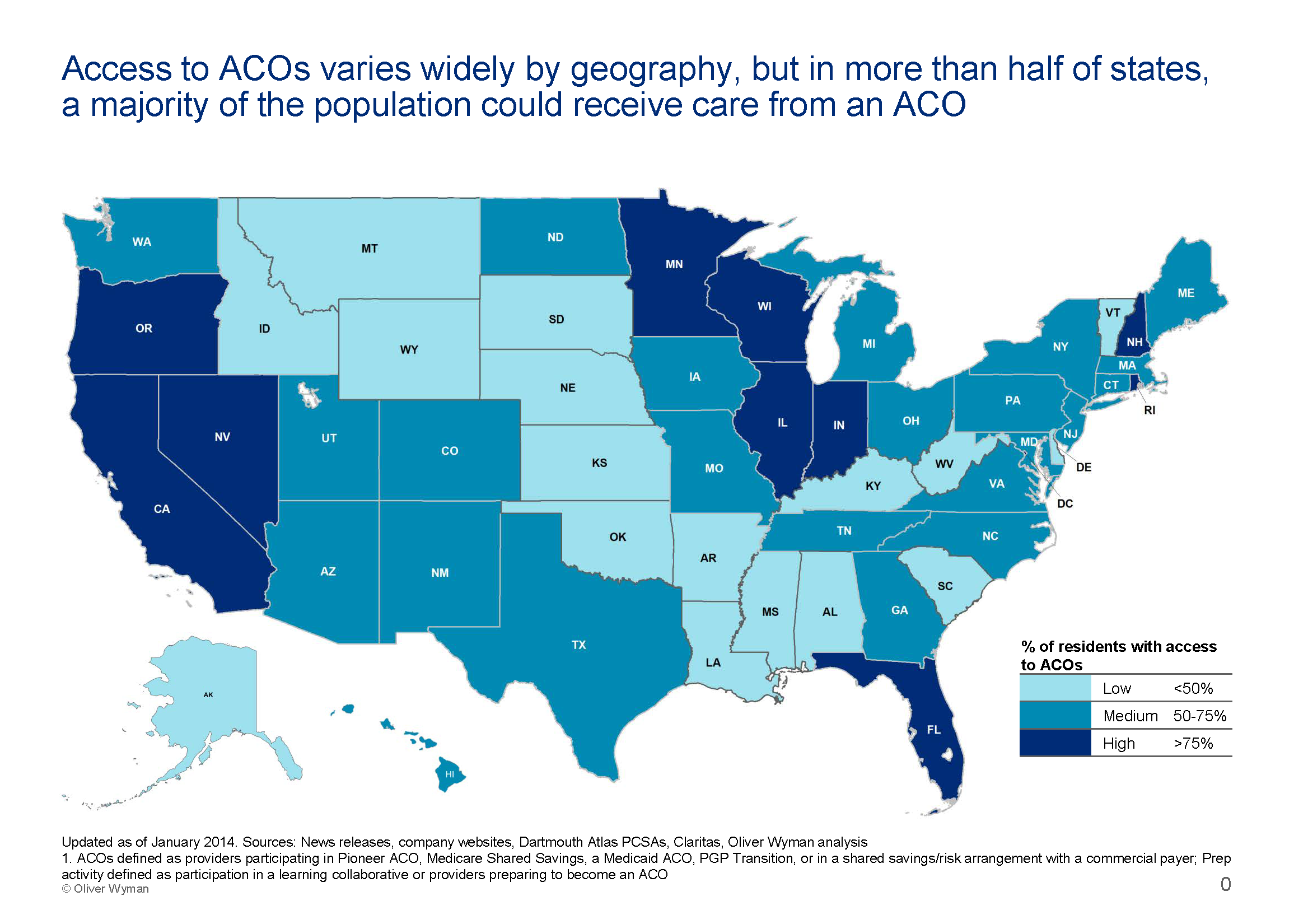The latest round of approvals in January brings the total of Medicare ACOs to 368, up from 235 in July 2013. Oliver Wyman has identified an additional 150 additional ACOs, bringing the estimated total to more than 520, up from 320 in July 2013 and 260 in January 2013. The numbers suggest that a fire has been lit—and it’s going to spread quickly.
ACOs Continue to Gain Ground
We currently count 522 ACOs in the United States, compared to 370 in September 2013 and 258 in February 2013. This number represents a 41 percent increase since September 2013 and a 102 percent increase since February 2013. The total number of patients served by these organizations is now between 46 and 52 million or roughly 15 to 17 percent of the population. Sixty-seven percent of the U.S. population currently live in a primary care service area (PCSA), compared to 45 percent in September 2013 and 52 percent in February 2013.




.pdf/_jcr_content/renditions/cq5dam.thumbnail.319.319.png)


